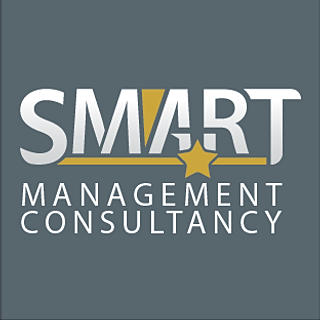Effective Strategies for Managing Business Risks
- Smart Management Consultancy
- May 5
- 4 min read
In today's dynamic business environment, managing risks is more critical than ever. Business risks can significantly impact an organization's efficiency, profitability, and sustainability. Drawing on effective strategies for risk management is essential for any business owner or manager. This article will provide you with actionable insights to identify, assess, and mitigate potential risks associated with running a business.
Understanding Business Risks
Business risks are uncertainties that may affect a company's objectives. They can stem from various sources, including financial, operational, strategic, and external factors. For example, financial risks might arise from fluctuations in market interest rates, while operational risks could relate to supply chain disruptions.
It's important to identify the specific risks your business faces. According to a study by the Risk Management Society, approximately 70% of businesses experience some form of risk annually. This statistic underlines the importance of a robust risk management strategy.

Types of Business Risks
To manage risks effectively, you first need to understand the different types. Here are some common categories:
Financial Risks: These involve the potential for financial loss and can include credit risk, currency risk, and liquidity risk.
Operational Risks: These risks arise from internal processes, systems, and people. For example, a technical failure or an employee error can disrupt business operations.
Strategic Risks: These relate to the long-term strategy of the business and can originate from market competition, regulatory changes, or shifts in consumer preferences.
Compliance Risks: This involves being compliant with laws, regulations, and standards relevant to the business sector.
Reputational Risks: Any negative publicity or customer dissatisfaction can significantly impact a company's reputation and, consequently, its revenue.
Understanding these categories will help you tailor your risk management strategies to fit your specific needs.

What are the five major activities of risk management?
To effectively manage business risks, you should engage in key activities within your risk management framework. The five major activities include:
Risk Identification: This involves recognizing potential risks that could affect your organization. Techniques like brainstorming sessions, SWOT analyses, and risk assessment tools can be helpful.
Risk Assessment: Once risks are identified, evaluating their potential impact and likelihood is crucial. Use qualitative and quantitative methods to prioritize these risks.
Risk Mitigation: After assessing risks, develop strategies to minimize their impact. Options include transferring risk (like insurance), avoiding risks (changing business processes), or reducing risks (implementing controls).
Risk Monitoring: Continuously monitor identified risks and their mitigation strategies to adapt to any changes in the business environment.
Communication and Reporting: Keep all stakeholders informed about the risks and the actions taken to mitigate them. This transparency builds trust and allows for more effective risk management.
These activities form a cycle that must be revisited regularly to ensure ongoing risk management effectiveness.

Effective Risk Management Strategies
Implementing effective risk management strategies is essential for any business. Here are some recommendations:
1. Develop a Risk Management Culture
Encourage a culture where everyone in the organization understands the value of risk management. This can be achieved through ongoing training programs and open discussions about risks. When employees feel empowered to identify and communicate risks, you’ll create a proactive risk management environment.
2. Utilize Technology Effectively
Today’s technology can significantly enhance your risk management efforts. Consider implementing risk management software that can streamline processes for risk identification, assessment, and communication. Tools like predictive analytics can provide you with valuable insights into potential risks before they materialize.
3. Conduct Regular Risk Assessments
Establish a routine for conducting risk assessments, whether quarterly, semi-annually, or annually, depending on your business model. This regular evaluation helps identify new risks or shifts in existing risks.
4. Create a Comprehensive Business Continuity Plan
A well-documented business continuity plan outlines how your business will operate during unforeseen emergencies. This plan should include strategies for communication, resource allocation, and recovery procedures.
5. Leverage External Expertise
Engaging with professional risk management services can provide invaluable insights and strategies tailored to your unique business challenges. Organizations like Smart MCBH specialize in risk management and can offer customized solutions that align with your organizational goals.
6. Regularly Update Policies and Procedures
As your business evolves, so do the risks associated with it. Ensure that your risk management policies are regularly updated to reflect changes in the market, industry, or regulations.
Monitoring and Reviewing Risk Management Strategies
Monitoring your risk management strategies over time is essential for long-term success. Use key performance indicators (KPIs) and benchmarks to evaluate how effective your risk management strategies are.
Consider implementing feedback loops where information from different departments can contribute to enhancing your risk management framework. Regular reviews will help you identify weaknesses and areas for improvement, ensuring that your risk management approach remains robust and effective.
Final Thoughts on Managing Business Risks
Effectively managing business risks is not just a necessity; it's a strategic imperative. By understanding the types of risks your business faces, actively engaging in the risk management process, and implementing effective strategies, you can protect your organization from unanticipated setbacks and capitalize on opportunities in a volatile marketplace.
By taking these proactive measures, businesses can foster resilience and adaptability, ensuring their long-term success in an ever-evolving landscape.















This article presents a solid framework for identifying, analyzing, and mitigating business risks in dynamic environments. The focus on proactive strategies and contingency planning truly highlights the importance of preparation over reaction. It’s refreshing to see practical tips that are applicable across industries, especially where timelines and quality are critical. Effective risk management in software project management ensures smoother execution, fewer disruptions, and more predictable outcomes. A highly valuable read for business and tech leaders alike.